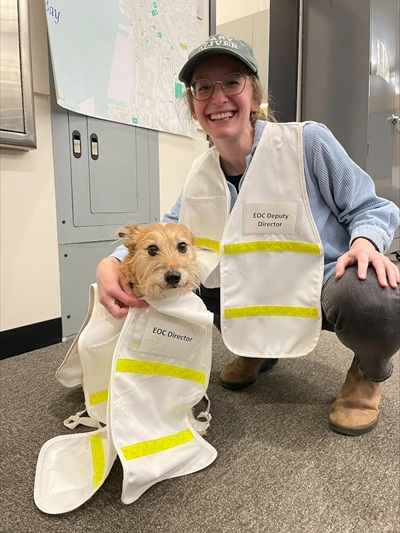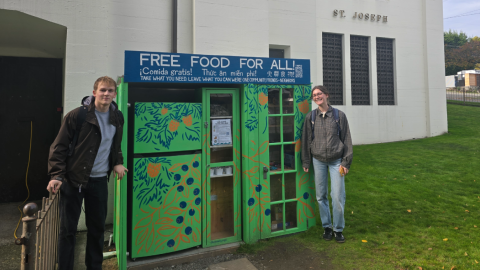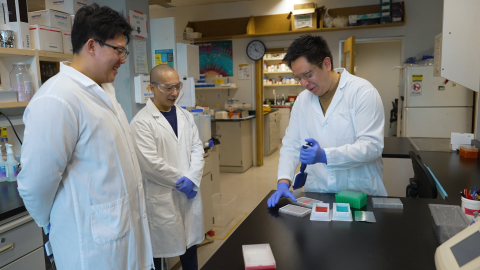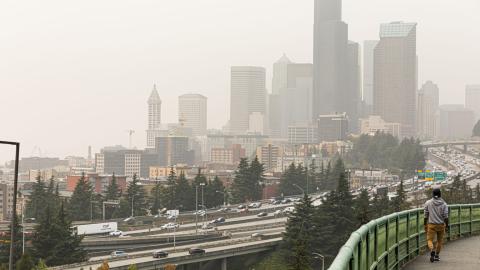As a planning coordinator, Meg Hamele works to prepare Seattle for the inevitable public health crises that will arise if and when a disaster strikes the city. But her career evolved from a much simpler everyday annoyance — grocery shopping.
Hamele graduated from the University of Wisconsin in 2017 with degrees in microbiology and religious studies and happily settled into her first job coordinating clinical research at the University of Chicago. As much as she enjoyed living in Hyde Park, the South Side neighborhood where the university is based, she found it difficult to accomplish basic errands.
“It was the first time in my life I didn't have a car, and getting groceries was really hard. Getting anywhere was really hard, because there just wasn't a lot of transit,” she said.
“I was a white, privileged woman who could Uber to the grocery store if I needed to,” she said. “But for people who are barely making ends meet, just surviving, how are we expecting these people to be doing well?”
The power of planning
She realized that things like transit infrastructure and grocery store placement aren’t accidental. Planners make those decisions and have the power to influence public health by addressing — or ignoring — issues like safety, walkability and access to food and health services.
“You cross certain streets in Chicago and your life expectancy is literally statistically dropping, which is horrific. It doesn't have to be that way,” she said. “It was showing up both in my personal life and in the patient populations I was working with.”
(In September 2020, the New York Times published a photo essay about this effect, titled “The Great Divide,” illustrating the 30-year gap in life expectancy between two neighborhoods in Chicago.)
“I got into emergency management work mostly interested in mitigation planning — so, how we design things so that when bad things do happen, we're lessening those impacts, especially around climate change.”
- Meg Hamele
Two thousand miles away in Seattle, Andrew L. Dannenberg had developed a master’s program at the University of Washington designed to address these very problems. Dannenberg is an affiliate professor in the Department of Environmental & Occupational Health Sciences (DEOHS) and in the Department of Urban Design and Planning. He directs the concurrent degree program for a Master of Public Health/Master of Urban Planning, which entails completing all requirements for both degrees and a thesis relevant to both fields.
Dannenberg said the program attracts highly motivated students who subsequently have taken a range of government, nonprofit, and private sector positions focusing on topics such as environmental justice, climate action, energy resilience and transportation planning.
Wearing both hats
Hamele moved to Seattle and enrolled at the UW. The program was a perfect fit.
“One of my favorite parts about being a dual student was being able to bring planning conversations back to a public health focus. That was a really, really empowering feeling,” she said. “I loved being able to wear both of those hats.”

Hamele graduated with her dual degree in 2023 and then joined Seattle's Office of Emergency Management, where she currently supports the development and updating process for a variety of emergency response plans, as well as the city's Emergency Management Strategic Plan. She also co-manages the update of the Seattle Hazard Identification and Vulnerability Assessment, which provides a comprehensive overview and analysis of the city's vulnerabilities to all types of disasters, including earthquakes, extreme weather, and human-caused hazards.
“My public health background has been super helpful, because so many of those disasters — flooding, wildfire, extreme heat — have a really clear public health nexus,” she said.
As a student working with DEOHS Associate Professor Nicole Errett, Hamele wrote her thesis on the integration of climate change into state hazard mitigation plans.
“I got into emergency management work mostly interested in mitigation planning — so, how we design things so that when bad things do happen, we're lessening those impacts, especially around climate change,” she said.
'Already making a difference'
Errett said she’s had opportunities to interact with Hamele professionally since her graduation.
“It's been wonderful to observe her putting her training into action by helping others identify ways that disaster planning decisions impact health and proactively consider strategies to mitigate these impacts,” Errett said. “She's already making a difference in our community.”
As someone with training across both disciplines, Hamele is glad to see a growing awareness of how public health and planning intersect.
“Planners should know that every planning decision has an impact on public health. Every bus route, every zoning decision, every density decision beyond just the physical infrastructure,” she said.
“You really have a chance to influence people's well-being, both physical and mental. Connected communities and smartly planned communities just have healthier, happier people.”



